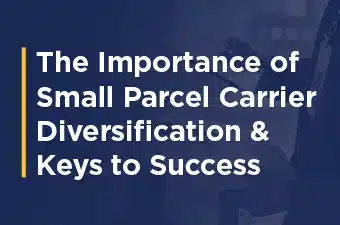As peak season begins, retailers and brands are looking for ways to control the costs of last mile delivery. The market conditions for peak season 2022 offer greater opportunity than previous years for parcel shippers to work with parcel providers, as capacity issues that persisted in peak season the past two years won’t be as prevalent. If you’re unsure where to start controlling shipping costs, read this.
Dollars in the Details
Too many shippers simply compare topline metrics like zone rates and cost per pound, with some additional attention paid these days to fuel surcharge rates. But there are a lot of possible surcharges that can get factored into a contract. And if they’re not addressed in your contract, they will show up in your invoices (sometimes labeled as accessorials).
Some surcharges, like “remote area surcharge,” may not be big enough or appear often enough to deserve special attention unless you ship more often than expected to customers in remote areas. But other surcharges can add up considerably. While peak season contract restructures are not the norm, some potential profit leaks can be addressed even after your contract is in place.
ADDRESS CORRECTION
Bad delivery addresses are a preventable profit leak that can be easily corrected without having to renegotiate a contract. An address verification solution makes sure the address is right the moment the order is placed. Some are free to implement, can be integrated in days or even hours and can pay huge dividends in cost savings.
DIMENSIONAL WEIGHT
Another area shippers overlook is negotiating your dim divisor—that is how your dimensional weight of your parcels is calculated. Getting clarity on the sizes covered by the rates in your agreement and aligning packing to your dimensional weight can help ensure you pay actual weight vs. dimensional weight. There are also buyers’ groups for packaging and shipping supplies to lower costs even more.
If merchandise is packed in ship-worthy parcels that fit into your contracted dimensions, you may be able to avoid additional packaging altogether. This saves on material and labor costs.
MISSING PLD
Avoiding package level detail (PLD) charges is a matter of literally paying attention to the details. By using shipping software or a disciplined 3PL to generate your shipping labels, you can easily flag missing fields, saving you time and money all year-round.
BILLING ERROR CORRECTION AND RECOVERY
For most shippers, this is the single largest source of unnecessary waste. The velocity and volume of parcel shipping during peak season simply leaves too much room for errors. In some cases, an initial error in coding recurring deliveries can turn into recurring overcharges if not caught in a timely manner.
If you have the staff with the expertise to audit your invoices, this will be a good use of their time. Otherwise, seriously consider a parcel audit and claims management service. There’s a reason these services exist: They more than pay for themselves.
Plan for Next Year
To make sure your parcel delivery contracts protect your profitability, write them well ahead of peak season and be sure as many accessorial rates as possible are covered. To help guide these negotiations, you need visibility into the details of your shipping expenses.
Once you’ve rolled up the data from this Peak Season and have the tools to analyze it, identify the biggest buckets of costs. These insights will help you select the best carrier mix for your needs and understand when and how to diversify. And it will help you negotiate even tighter contracts with those carriers moving forward.
If insurance has historically been folded into your last mile delivery charges, consider carving it out and using a third-party for that service to see potential savings.
Peak Season 2022 will be unlike the last two years, with more opportunity for you to review your parcel program and make certain you are making the most of your transportation spend and keeping your customers happy. Please reach out if you have any questions!








